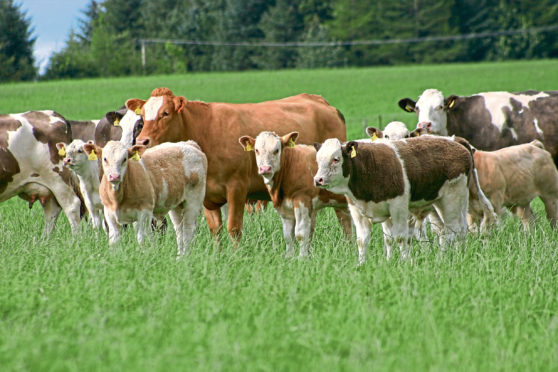The number of Scottish cattle has declined in the past decade but farmers have become more efficient, according to Quality Meat Scotland (QMS).
Data from the red meat levy body reveals a 5% decline in the breeding cow herd in the past 10 years, including a 9% reduction in beef cow numbers.
QMS director of economics services, Stuart Ashworth, said although the national herd was shrinking, the sector was now more efficient.
“While the dairy herd shows growth in females that have calved, the number of dairy females over two years old without calves has significantly reduced suggesting a continued move to calving at a younger age,” he said.
“A similar pattern appears in the beef cow sector.
“The number of over two-year-old females without calves has fallen faster suggesting a higher proportion have already had a calf.”
He said the average slaughter age for prime cattle had reduced by 2-3%, but carcases were 10-15kg heavier.
“The push for further technical efficiencies associated with animal growth rates and feed efficiencies will not diminish in the next decade as, among other things, they contribute significantly to the challenge of reducing greenhouse gas emissions and improving environmental sustainability,” said Mr Ashworth.
“This technical efficiency is also crucial to long-term financial viability.”
